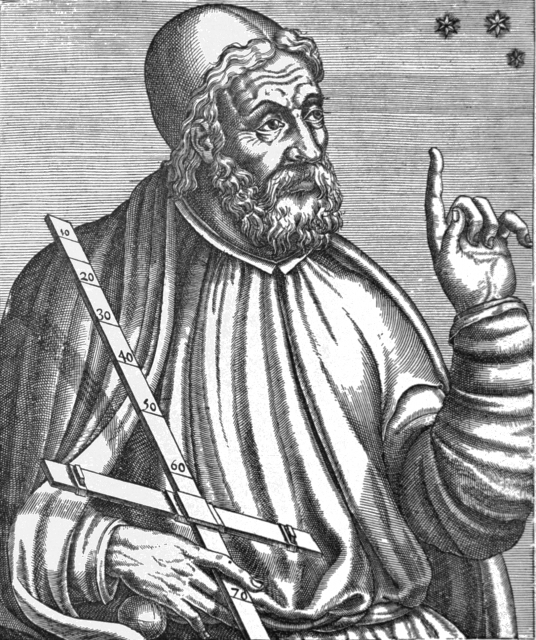Ptolemy
KLAUDIOS PTOLEMAIOS, known as Ptolemy in English, lived in Alexandria, EGYPT, in the second century C.E. He is considered one of the most important scientists of the later Classical era, with two major treatises in the areas of astronomy and geography. His geocentric model of the universe was the standard accepted view of the cosmos in Europe until the 16th century. He is also credited with the system of assigning systematic coordinates to geographic features on a map using lines of longitude and latitude.
Very little is known about the life of Ptolemy, except that he made astronomical observations in Alexandria between 127 and 141 C.E. Alexandria was the leading city for scientific scholarship in the 2nd century. Ptolemy's works were written in Greek, the standard scientific language of the day, but were lost to Europeans after the fall of the Roman Empire, and rediscovered in Arabic translation only in the 12th century. For this reason, Ptolemy's most significant work is known by its Arabic name, the Almagest, a rough translation of the original Greek title, He Megale Syntaxis, or The Great Treatise. The Almagest is composed of 13 books, compiling the astronomical knowledge of the ancient Greek and Babylonian worlds. The text includes observations of the stars and planetary orbits that are based largely on the work of Hipparchus from three centuries before. Ptolemy was innovative, however, in creating a mathematical system that explained the movement of the sun, moon and planets around the Earth.

This geocentric (Earth-centered) universe had been proposed since the days of Aristotle, but astronomers had been unable to show mathematically how it worked. The Ptolemaic system used three basic geometric constructions—the eccentric, the epicycle, and the equant—to explain the otherwise erratic movement of the celestial bodies. Epicycles, for example, were small circles that revolved around a larger circle, and made sense of the observed orbital peculiarities of the planets Mars and Jupiter, which seemed at times to slow down, stop, and even reverse direction in their course across the sky. This system was adapted by scholars in the Islamic world and added to for centuries before it was reintroduced in the West. It wasn't until the work of Copernicus and Brahe in the 16th century that the fundamental errors of the Ptolemaic system were exposed, and although geocentrism was rejected overwhelmingly in favor of heliocentrism (a sun-centered universe), nevertheless, the mathematics behind Ptolemy's work continued to be praised as a model of sophisticated classical scholarship.
Ptolemy's second major work is the Geography, which was also a compilation of the geographical knowledge of the known world of his time. The Geography also gave instructions on how to create maps and discussed mathematical projections, or how to plot a spherical object onto a flat plane. For his maps of the known world, Ptolemy assigned coordinates to all features based on lines of LATITUDE AND LONGITUDE. For latitude, he based his calculations on the length of the midsummer day as it increases from south to north. For longitude, he assigned the number zero for the point furthest west that he knew of, the CANARY ISLANDS, in the ATLANTIC OCEAN, then plotted his lines as far east as CHINA, covering 180 degrees. Ptolemy was aware that he knew only about a quarter of the globe, but his calculations for the globe's total circumference were off by a sixth. This mistake and mistakes made in the Almagest regarding the length of the solar year (he was off by 28 hours, a significant error for a mathematician of Ptolemy's stature) have led some recent scholars to question whether Ptolemy was actually the man responsible for the system that bears his name.
Other works demonstrated the breadth of Ptolemy's scholarship. The Optics analyzes reflection and refraction of light on flat and spherical mirrors. His innovation here was the first known mathematical relationship between the angles of rays of refracted light and incident light. Harmonics is one of the earliest books on music theory, discussing how different notes are produced by lengthening and shortening of a vibrating string. The Tetrabiblios (Four Books) was meant as an accompaniment to the Almagest, to explain how the movement of the planets affected a person's daily life. It was therefore one of the foundations of Western astrology, which, until recently was firmly intertwined with the science of astronomy.